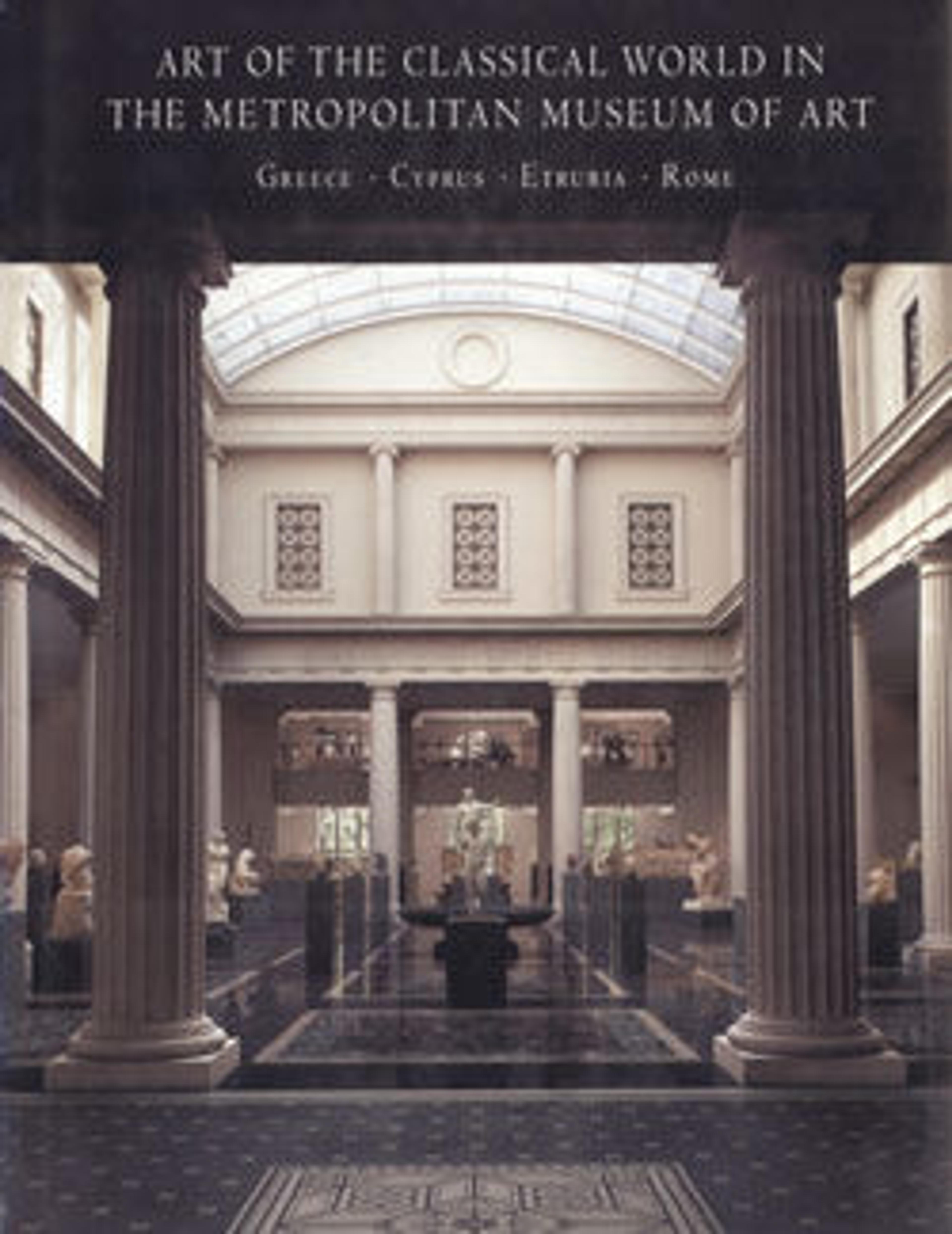Bronze statuette of Aphrodite
Variant of the 4th century B.C. Aphrodite of Knidos by Praxiteles
No other sculpture in antiquity enjoyed the renown of Praxiteles' Aphrodite of Knidos. For the Roman author Pliny the Elder (A.D. 23–79), it was not only the finest work by Praxiteles but also the finest statue in the world. Roman coins minted in Knidos that depict the statue provide the general identification of the pose. Aphrodite stands nude, with her weight on her right leg, her head turned to the left, her right hand covering her pubic area, and her left hand holding a fold of drapery that falls onto a hydria (water jar) standing on a pedestal. The statue was erected in a round temple and was meant to be viewed from all sides. The goddess is depicted undressing before (or dressing after) a bath in "heroic nudity" as unconscious and glorious as that of the gods.
This magnificent large bronze statuette represents only one variation on the Praxitelean original. While originally an over-life-sized work sculpted in Parian marble, the Aphrodite of Knidos was widely imitated and adapted by artists of the Greek and Roman world in many mediums and on many scales.
No other sculpture in antiquity enjoyed the renown of Praxiteles' Aphrodite of Knidos. For the Roman author Pliny the Elder (A.D. 23–79), it was not only the finest work by Praxiteles but also the finest statue in the world. Roman coins minted in Knidos that depict the statue provide the general identification of the pose. Aphrodite stands nude, with her weight on her right leg, her head turned to the left, her right hand covering her pubic area, and her left hand holding a fold of drapery that falls onto a hydria (water jar) standing on a pedestal. The statue was erected in a round temple and was meant to be viewed from all sides. The goddess is depicted undressing before (or dressing after) a bath in "heroic nudity" as unconscious and glorious as that of the gods.
This magnificent large bronze statuette represents only one variation on the Praxitelean original. While originally an over-life-sized work sculpted in Parian marble, the Aphrodite of Knidos was widely imitated and adapted by artists of the Greek and Roman world in many mediums and on many scales.
Artwork Details
- Title:Bronze statuette of Aphrodite
- Period:Late Hellenistic
- Date:ca. 150–100 BCE
- Culture:Greek
- Medium:Bronze
- Dimensions:H. 20 3/8 in. (51.7 cm)
- Classification:Bronzes
- Credit Line:Rogers Fund, 1912
- Object Number:12.173
- Curatorial Department: Greek and Roman Art
More Artwork
Research Resources
The Met provides unparalleled resources for research and welcomes an international community of students and scholars. The Met's Open Access API is where creators and researchers can connect to the The Met collection. Open Access data and public domain images are available for unrestricted commercial and noncommercial use without permission or fee.
To request images under copyright and other restrictions, please use this Image Request form.
Feedback
We continue to research and examine historical and cultural context for objects in The Met collection. If you have comments or questions about this object record, please contact us using the form below. The Museum looks forward to receiving your comments.
